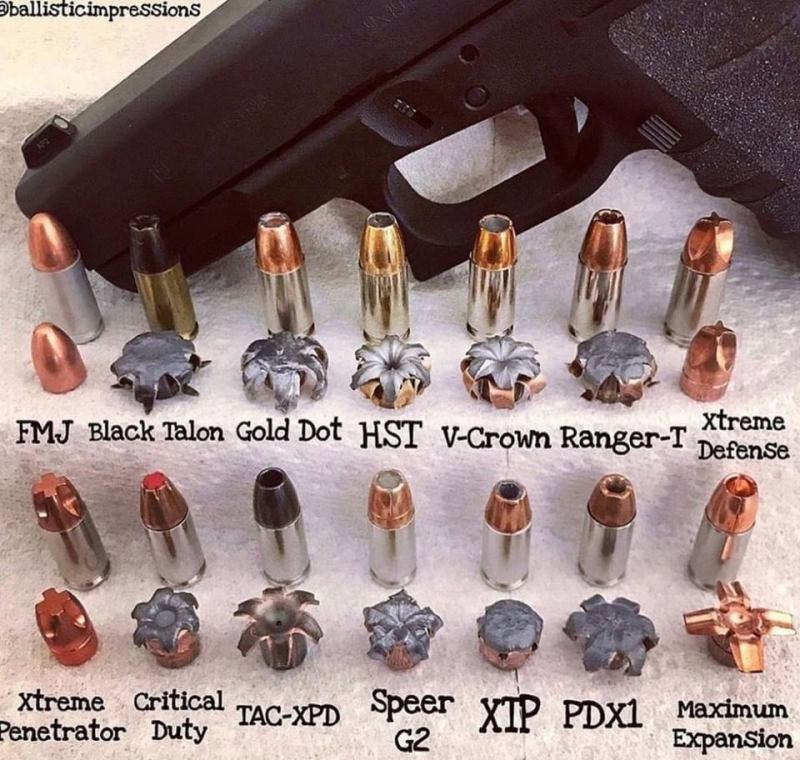If you’re not a “gun person,” per se, or even if you are, you probably know that not all bullets are designed the same way. What you might not know, however, is just how different they can actually be. Over on the CoolGuides subreddit, user BallisticImpressions recently created a viral photo that perfectly illustrates the point, and it’s way more interesting than you might expect.

The comparison photo shows 14 different types of bullets, specifically how each one looks before and after impact. To be clear; these were fired under scientific (you might call them “ideal”) conditions. Some astute commenters noted that the results are almost always very different in real-world situations. The Black Talon, for example, appears to pancake into a flat, nearly smooth starburst pattern. But, commenter RamsDeep-1187 notes, “My father pulled a [Black Talon] out of some guy’s ankle and sent me a photo of it, and it looked a lot worse.” Clearly, there’s a world of difference between how various types of bullets land when fired in a lab versus when fired at targets, especially moving targets.
Common types of bullets
To the uninitiated, it might seem like most, if not all, bullets would be designed with maximum penetration in mind. But different situations often call for specific types of bullets. Generally speaking, there are three common types used in handguns and rifles: full metal jacket (FMJ), hollow point (HP), and soft point (SP).
The FMJ round pictured above is designed for long-range accuracy and maximum penetration. They’re also an extremely cost-effective option, making them the perfect choice for range target shooting and as an all-around military-friendly round. Because they retain most of their energy after firing, they can easily penetrate straight through soft targets and continue on.
On the other hand, HP rounds, like the TAC-XPD and V-Crown shown above, are purpose-built bullets to expand on impact. When fired at a person (typically from a handgun), they’re designed to immediately expand inside the body. This makes for great stopping power by maximizing damage to soft tissue and also helps to make sure the bullet doesn’t travel too far and inadvertently hit someone else (like a family member) on the other side. For both of these reasons, HPs are the go-choice for home protection and why they’re a popular round for handgun owners with an eye toward self-defense weapons. Likewise, they’re also popular for hunting.
Check out this video breakdown of the different types of bullets, especially the distinction between full metal jacket and hollow point, where Special Agent Chris Walden from the Utah Attorney General explains.


